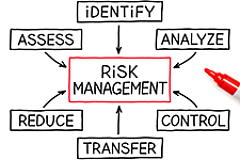 Do you have Gen X, Gen Y, and Millennials under your employment? If so, read on to learn how to manage a multigenerational workforce.
Do you have Gen X, Gen Y, and Millennials under your employment? If so, read on to learn how to manage a multigenerational workforce.
By 2020, millennials will make up about 50% of the workforce. But there are more generations actively working than in any other time in history.
At present, some companies have five generations under one roof. Their employees range from The Silent Generation to Gen Z.
Most companies consider generational diversity an asset. And rightly so. It gives companies an advantage.
With many generations in the workplace, your company has access to fresh ideas and decades of experience. When these two assets merge, companies innovate.
[quotes]But managing a multigenerational workforce can be a challenge.[/quotes]
Generational differences often lead to a lack of cohesion. Sometimes, they can lead to outright hostility.
To manage multiple generations in the workplace, you may need to rework your management style and implement new initiatives. Keep reading to learn how to keep your multigenerational workforce happy and productive.
Let's Talk About the Millennials
First, the elephant in the room: millennials.
This generation has been subject to a great deal of poking and prodding. They've been disparaged in the media and held responsible for "killing" countless industries. They've been called entitled, naive, and narcissistic.
[quotesright]Of course, what you read in the news doesn't always conform to reality. [/quotesright]
The truth is, millennials are just as capable as your other employees. In fact, they're the most educated generation in history (so far).
They're also just as productive. A survey by Microsoft found that 93% of millennials believe productivity is "the key to happiness."
Their inherent knowledge of technology makes them great multi-taskers. [quotesright]They tend to pick up computational tasks quickly. [/quotesright]
But like any young workforce, they lack experience. They need to develop in their careers and learn from your more experienced employees.
 Your younger workers may have very different perspectives when compared to your older employees. This can sometimes lead to problems.
Your younger workers may have very different perspectives when compared to your older employees. This can sometimes lead to problems.
Thankfully, there are plenty of ways to bridge generational differences and keep your company productive. Here are just a few tips for managing multiple generations in the workplace:
Create Multigenerational Teams
[quotes]Try not to keep each generation siloed.[/quotes] This can be difficult, especially when your more experienced employees hold the high-tier positions.
Instead of a generational hierarchy, break your employees up into teams. Include members of each generation in these teams. Identify each member's skills in the group and how they are to contribute.
For example, you may have your seasoned workers lead each team. Depending on your business, they could be creative directors, programming team leaders, editorial managers, etc.
This will create more opportunities for mentorship. Your seasoned employees will be able to transfer knowledge to younger employees. Likewise, your younger employees can bring fresh ideas and perspectives to their team.
Each team should have documented goals and expectations. Meet with your teams regularly to review their performance. Make sure every team member is held accountable for their role.
Adopt a Flexible Management Style
Employees of different generations respond better to different styles of management. This may sound like a stereotype, but it relates to the context from which each generation grew up.
For example, Baby Boomers are used to authoritarian and hierarchical corporate structures. [quotesright]That's how every company operated in the 1960's. [/quotesright]
The millennial generation grew up during the tech boom. This was a time of great experimentation among corporate structures. Companies like Apple, Google, and a host of startups changed the way employees were labeled and the way they interacted.
This doesn't mean you need to abandon your current organizational structure. [quotesright]It simply means you need to recognize each employee's context when managing them. [/quotesright]
For example, your younger employees may prefer more opportunities to develop professionally. Your older employees will be used to traditional management styles, so they may be uncomfortable if you suddenly drop your guard and engage with them more casually.
Rethink the Performance Review
Performance reviews can be a tense time for any employee. But there may be differences to how each generation will react to them. For example, your younger employees may respond better to non-traditional performance reviews.
Traditional performance reviews are usually formal affairs. They involve checklists and clipboards.
You shouldn't abandon these tools completely. But when managing younger employees, consider alternatives for communicating with them.
Every employee likes to hear they've done a good job. But younger generations aren't as sure of themselves in their positions. They may need that confirmation more often.
Meanwhile, older generations will be well-situated in their roles and may not need as much affirmation.
[quotesright]When delivering negative feedback to younger generations – heck, any generation – try to frame it from a position of professional growth. [/quotesright] Every professional learns by failing. It's what you do with that failure that determines whether you grow or sputter.
Move Beyond Labels
This should go without saying. But avoid speaking about generational differences at the workplace. [quotes]This is a surefire way to break cohesion.[/quotes]
Of course, it's impossible not to consider your employees' generational differences. In fact, you should consider them. But that doesn't mean you need to bring them up.
Work with each of your employees as individuals. Let any age gaps fall by the wayside. This will help you remove stigmas and encourage your employees to focus on getting the job done.
[quotesright]Avoid every kind of stereotype. [/quotesright] Seemingly harmless statements about an employee's proclivity to one thing or another can lead to division. No one wants their individual skills to be attributed to stereotypes.
It might be true that millennials can pick up new technologies quickly. That doesn't mean they can fix your computer.
Make Time for Informal Meetings
If your teams don't communicate well together, you're likely to face difficulties among your employees. Building camaraderie isn't something you can do overnight. But you can create a process for it.
While you can't force people to be friends, you can help them build professional relationships. Take time every week to have a brief, informal meeting with your teams. You can even have your multigenerational teams do this internally.
This will give your workforce a chance to get to know one another and share their experiences. This type of social time can help break down walls and stereotypes.
Help Your Multigenerational Workforce Thrive
Your multigenerational workforce is an asset. Follow these steps to help them work better together and accomplish high-level objectives.
Do you have a question about managing a multigenerational workforce? We’re here and our leadership programs give us the tools to help your workforce and your business grow and thrive. Let’s chat: USA: 877.433.6225 {listown














